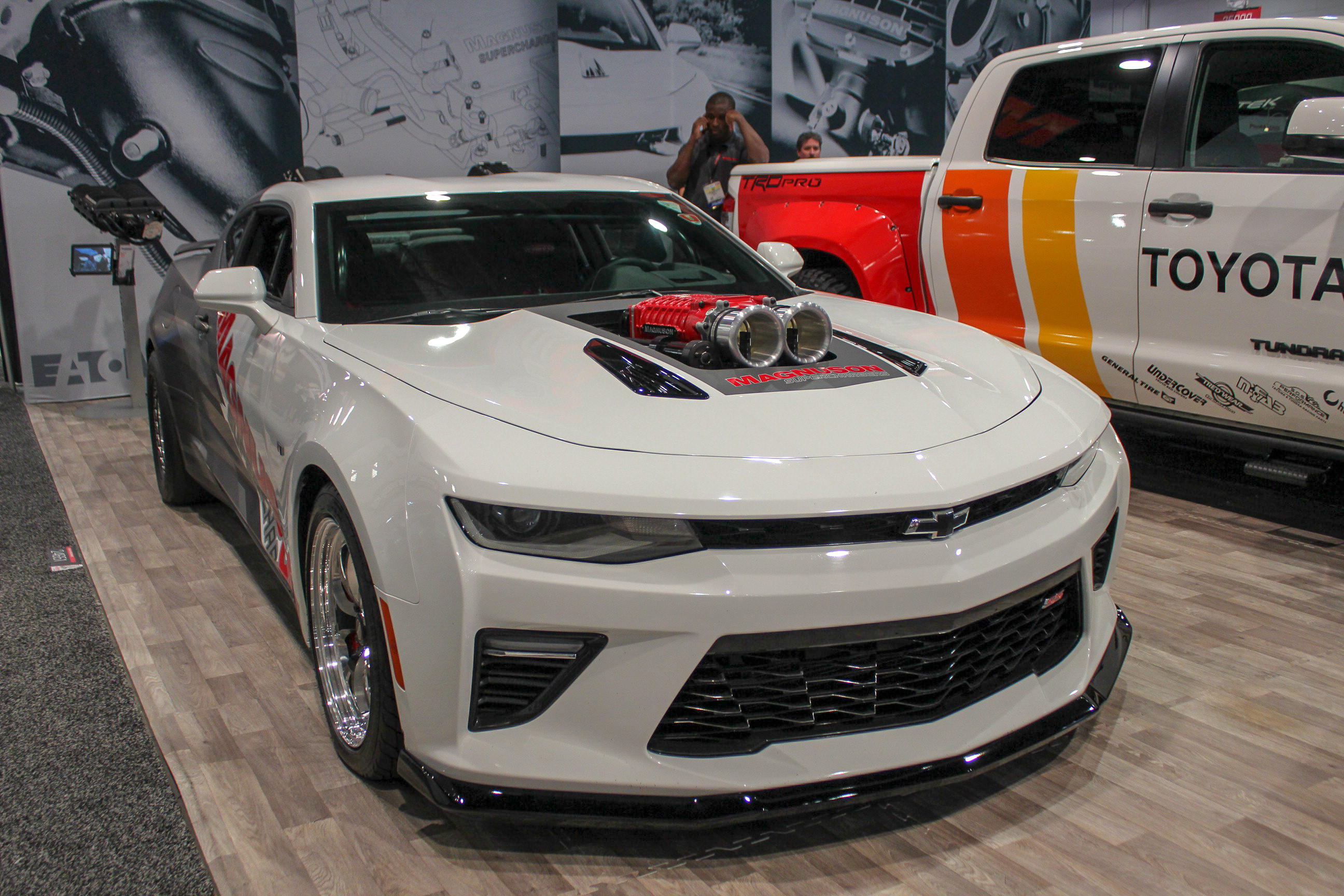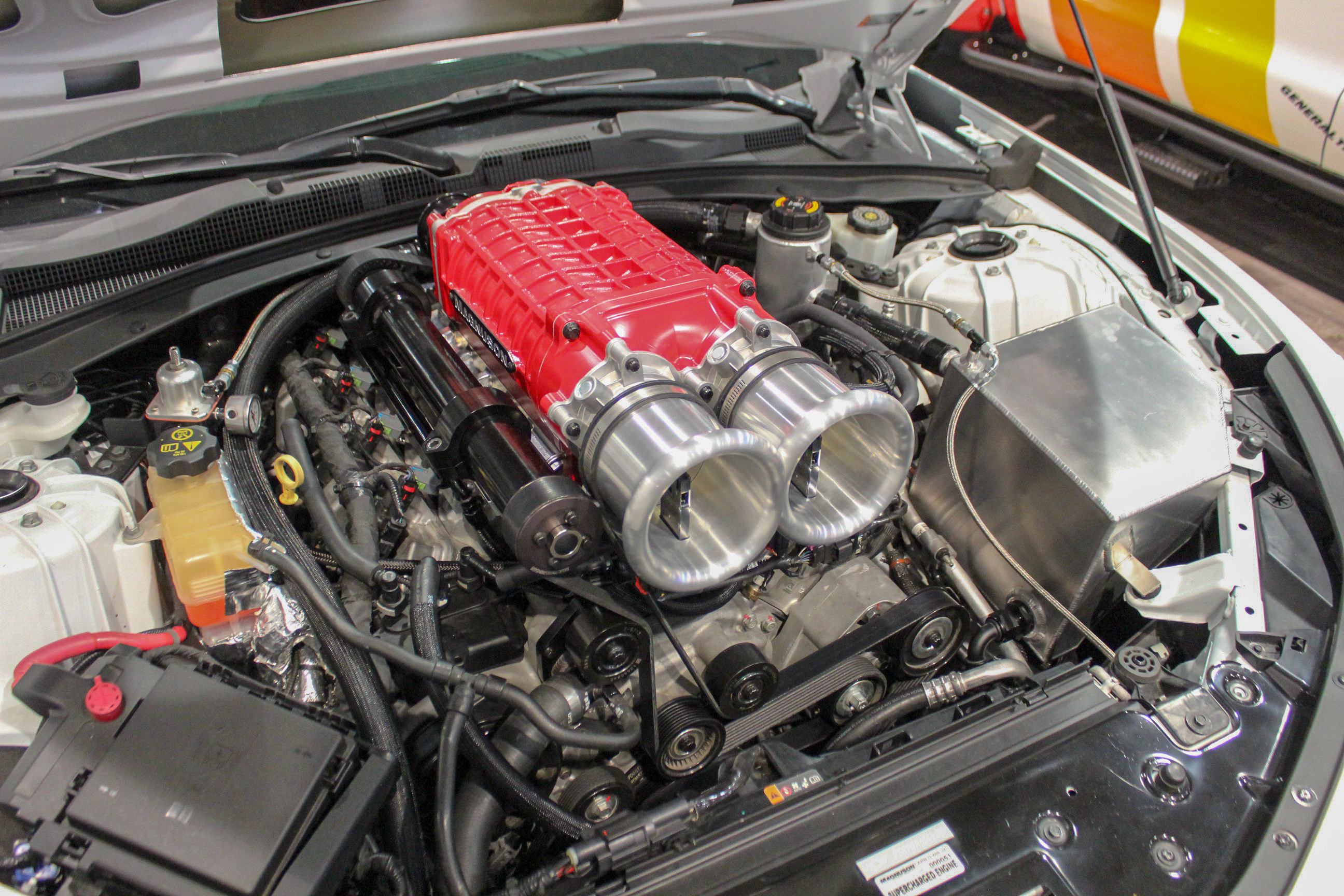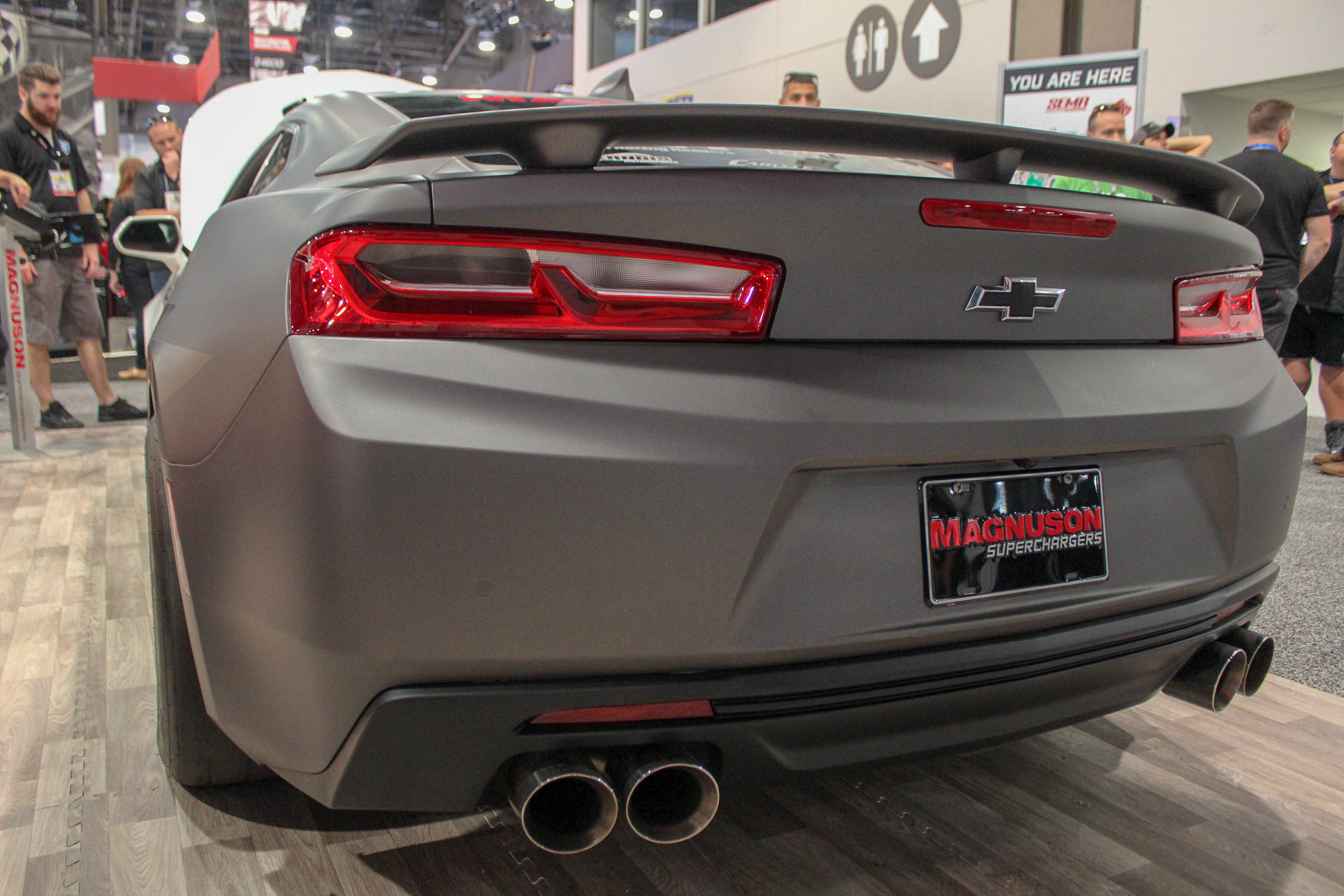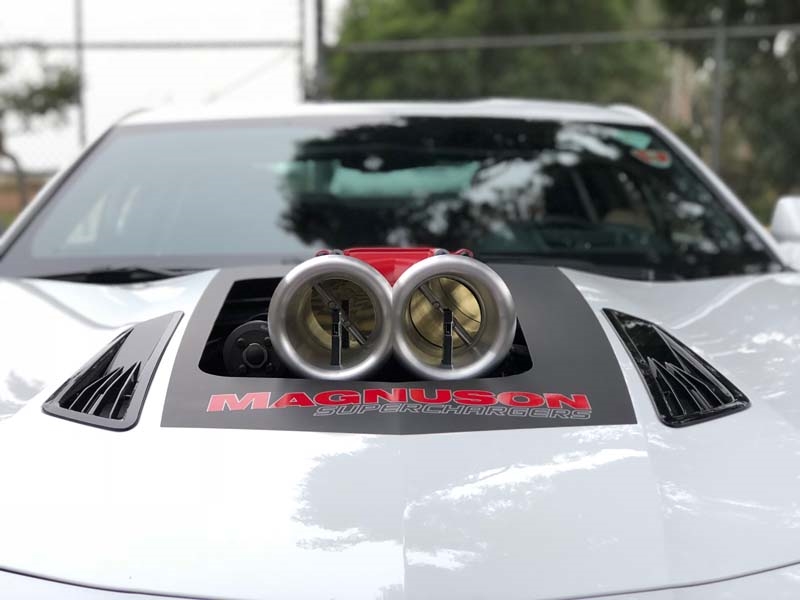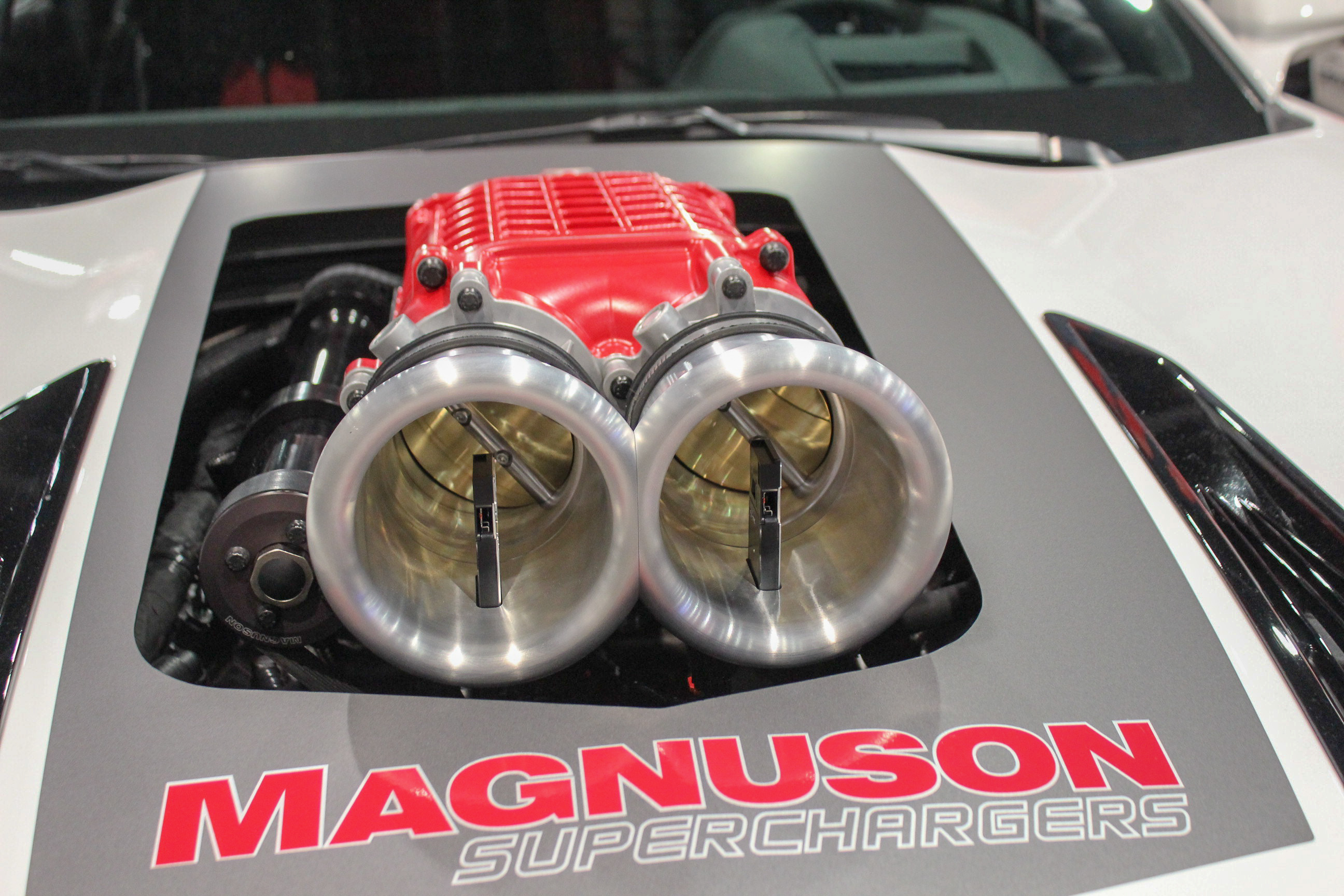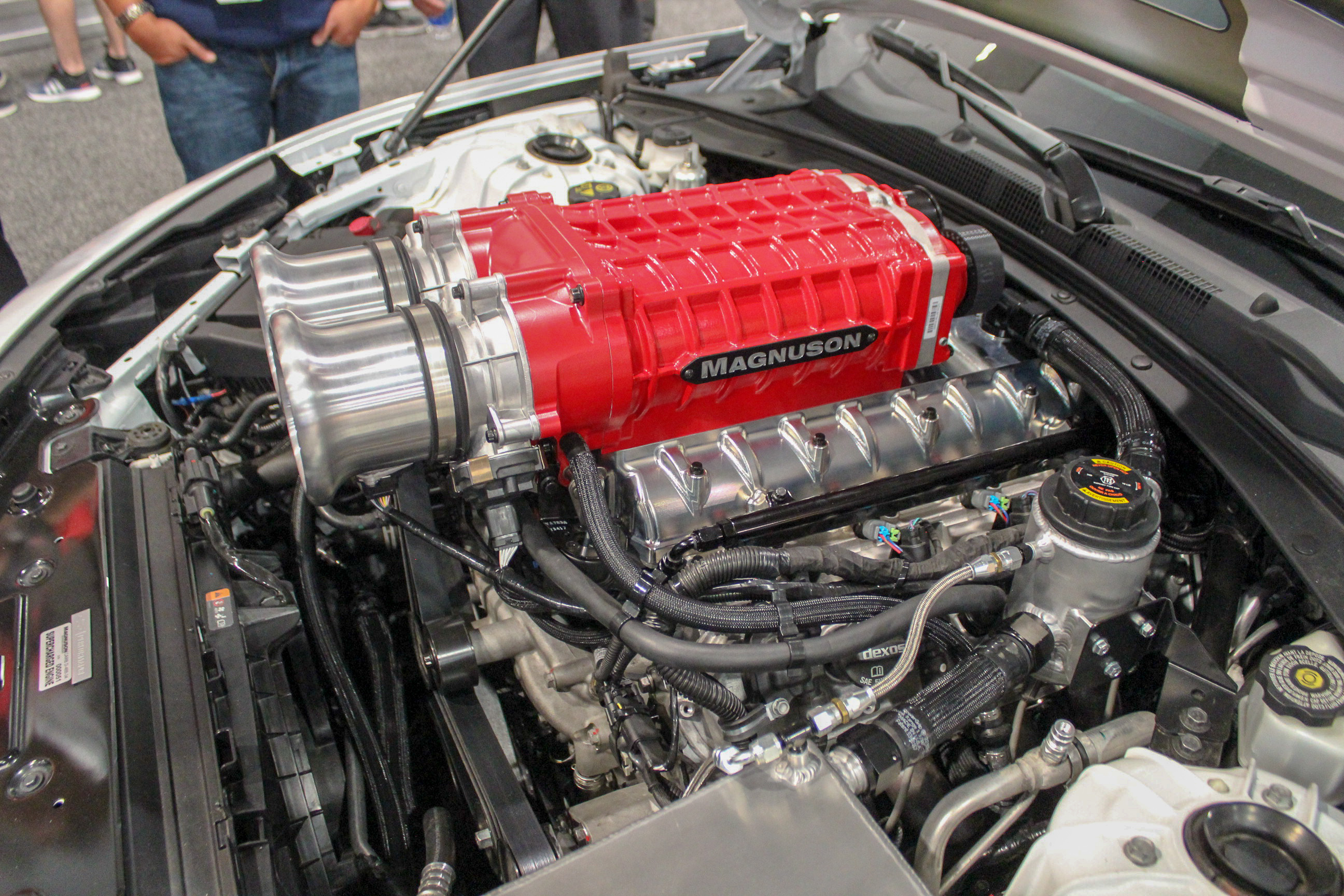While we love seeing thumping GM V8s in engine bays they were never intended for, sometimes a great build is really just about hot rodding an already-potent factory combination. Such is the case with this month’s spotlight, which hails from the skunkworks at Magnuson Superchargers‘ headquarters in Ventura, California.
While dropping a blower atop one of General Motors’ Gen V V8s certainly isn’t uncharted territory, Magnuson’s build goes a lot further than your typical factory-produced LT4 – or the as-yet-unreleased LT5 for that matter.
This particular Camaro has been in the Magnuson stable for a little while now, and it first made its way into nine-second quarter-mile territory using a TVS 2300 blower. After debuting the TVS 2650 at SEMA 2016 bolted to a Dodge Challenger SRT Hellcat, the team decided they'd showcase their latest supercharger on a GM platform for SEMA 2017 by showing off what their new TVS 2650 is capable of in their sixth-generation Camaro. The short answer? It's capable of a hell of a lot.
But getting this Camaro into four-digit horsepower territory wasn’t just a matter of ratcheting up the boost. We got the low down from Magnuson’s Jesse Iwuji about how the company turned a relatively mild-mannered sixth-generation SS into a bonafide street beast.
Getting Inventive With Magnuson’s Latest and Greatest
While a modern-day LT1 is happy to receive a dose of boost straight off the showroom floor, a number of factors put the ceiling of reliable output at about 800 horsepower before bottlenecks start to make their presence known. And although we’ve seen ways around that cap before, Magnuson’s approach is substantially more comprehensive than most, to put it mildly.
“Going into SEMA, what we wanted to do was create something that would be really eye catching for the crowd,” explains Iwuji. “Something out of the ordinary that had a little bit of that classic feel to it, but with a new-school style that would pair well with a late-model Camaro. We knew having the blower sticking out of the hood was going to grab people’s interest, and the way it sounds draws a lot of attention as well.”
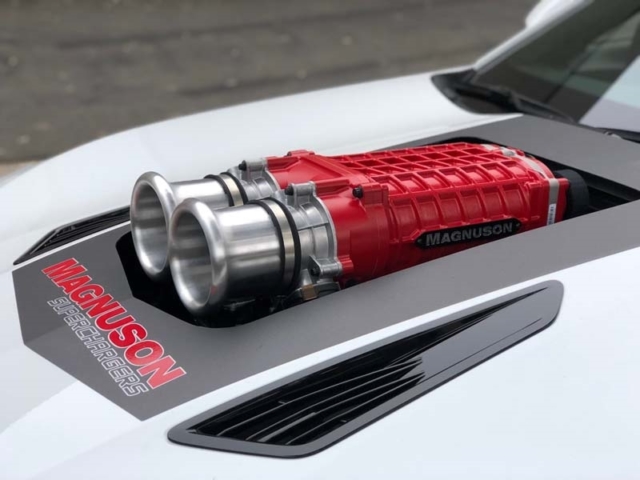
Since the blower components they were using were originally intended for use in the Silverado pickup, the team ran into some hood clearance issues. Of course, that’s nothing a Sawzall won’t fix, and it gives this beastly Camaro a throwback dragster look with a modern twist.
The company had lofty goals for the project from the get-go. They started by pulling the motor out of the car, which they then sent to the folks at Livernois Motorsports to rebuild from the ground up. Along the way, they sleeved the block, added beefed-up forged internals and threw in a new crankshaft that bumped the LT1’s displacement up to 416 cubic inches.
But without a doubt, it’s the forced induction set up that serves as the centerpiece of this build. The blower base was originally designed for use on a Silverado, but the Magnuson team realized it would also work on the Camaro if the issue of hood clearance could be resolved. In classic musclecar tradition, that was handled by simply cutting out a section of the hood to allow the blower to peek through it when shut.
Mounted on that base is Magnuson’s newest supercharger, the TVS 2650. Displacing 2.65-liters, the hybrid-roots blower is said to flow 10 percent more air than a 2.9-liter twin screw-style unit, and 33 percent more than Magnuson’s own TVS 2300.
With the supercharger proudly displayed whether the hood is up or down, Magnuson wanted to give the induction system a custom aesthetic as well. Feeding the blower is a pair of throttle bodies with velocity stack-style trumpets, each with its own mass airflow sensor mounted within. The system is designed to primarily run off a single throttle body and MAF to ensure good drivability and reasonable efficiency. But push the throttle past about 75 percent and the secondary element of the setup kicks in, unleashing the full fury that this ground-pounding beast is capable of.
The mass air flow sensors are mounted into the trumpet for each throttle body. The secondary throttle body and MAF remain inert during normal driving, but will spring into action after about 75-percent throttle is applied.
“It took a lot of tuning to get the setup dialed in to where the two throttle bodies were happy working in conjunction,” Iwuji explains. “It wasn’t an easy task, but Mike and the rest of our engineers really put in the time to make sure the setup would work exactly how we wanted it to.”
Of course, part of the overall goal was making big power, which this Camaro seems to have no trouble doing. “As it sits now, on just 19 pounds of boost, it made 1,153 horsepower to the wheels,” says Iwuji. “It has more in it for sure. We believe it could possibly hit around 1,300 or so before we’re done with it. If we turn up the boost a bit – I think we can get to about 25 pounds, maybe a little more. With that and a small re-tune, we should be there.”
Right now, on just 19 pounds of boost, it made 1,153 horsepower to the wheels. It has more in it for sure. We believe it could possibly hit around 1,300 or so before we’re done with it. If we turn up the boost a bit – I think we can get to about 25 pounds, maybe a little more. With that and a small re-tune, we should be there. – Jesse Iwuji, Magnuson Superchargers
This isn’t the first time the TVS 2650 has broken cover though. “We also offer the 2650 for the Hellcat,” Iwuji says. “We debuted that at SEMA 2016, and that was the first time we’d shown off the 2650. This year we wanted to showcase it again, but on a different platform. We decided we were going to go with GM for it, so it came down to the Camaro or the Corvette. Ultimately, the Camaro made more sense because those owners tend to be more interested in drag racing and that sort of thing. We also already had the car and had done 9-second passes with it previously using the TVS 2300, so we wanted to see how it would change things when we stepped it up.”
Brutal Street And Strip Performance
While the Camaro is still a street-driven machine, the modifications done to this Camaro lend themselves to drag strip prowess specifically. Skinny wheels and tires up front help reduce rolling resistance and mass, while the rear gets a set of 275mm-wide Mickey Thompson drag radials wrapped around beadlock wheels from Weld.
Though the eight-speed gearbox, rear end and other core elements of the drivetrain remain stock, the Magnuson team swapped out the factory two-piece driveshaft for a one-piece aluminum unit and put in beefier axles to help cope with the massive amount of power on tap.
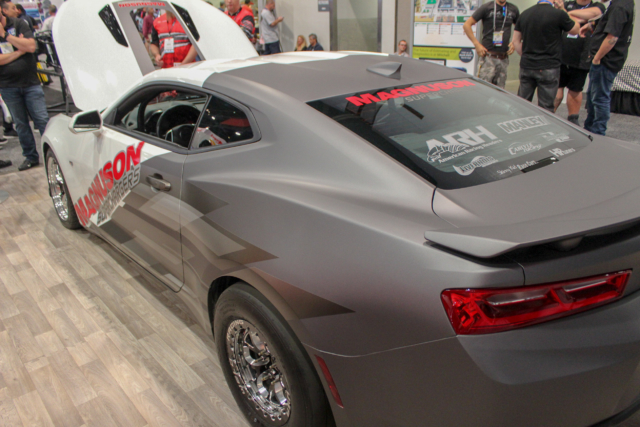
Aside from beefed up axles and an aluminum driveshaft, essentially everything behind the motor in the drivetrain is factory stock.
Inside, Skinny Kid Race Cars in Commerce Charter Township, Michigan installed a roll cage, while a pair of Kirkey race seats with five-point harnesses replaces the factory buckets.
Weighing in at roughly 3,700 pounds, the car has posted a 9.60-second e.t.’s at 151 miles per hour with a 1.7-second 60-foot time. Iwuji says the team is continuing to dial in the transmission settings and manage the grip with the amount of power on-hand.
While we’d certainly understand if Magnuson felt as though they’d taken this street-driven Camaro as far as it could reasonably go, Iwuji makes it clear that they’re not done just yet.
For most LT-based builds, it's the direct injection system which presents the biggest barrier to building power. To get around this, Magnuson added a secondary multi-port fuel injection system to supplement the direct injection system. The DI system can handle about 800 horsepower on its own, and the multi-port fuel injection system supplies the remainder of the fuel required to get the power into the 1,200 rear-wheel horsepower range.
“The plan with this particular car is to break the record for sixth-generation Camaros in the quarter-mile,” says Iwuji. “The car will be able to make the horsepower to do it, now it’s just a matter of making sure we have the right suspension and chassis setup to make sure it can get the power to the ground without breaking anything so we can get down the track. Once we do that, we fully believe we’ll have the opportunity to break the record.”
With the quickest sixth-generation Camaros starting to dip into the high 8s it’s undoubtedly an ambitious goal, but it’s also clear that Magnuson’s build is making the power needed to be a serious contender for the title.




